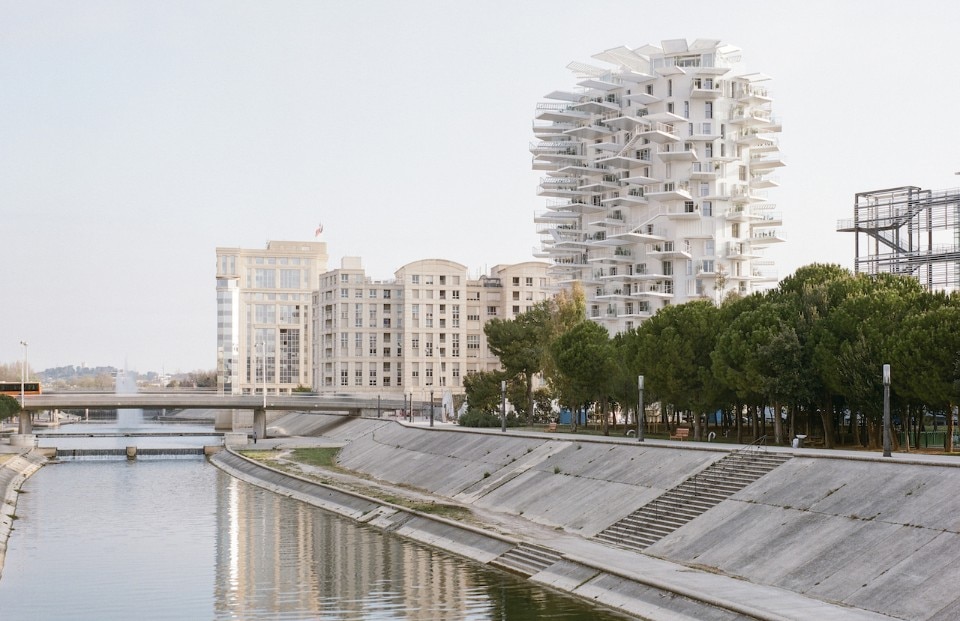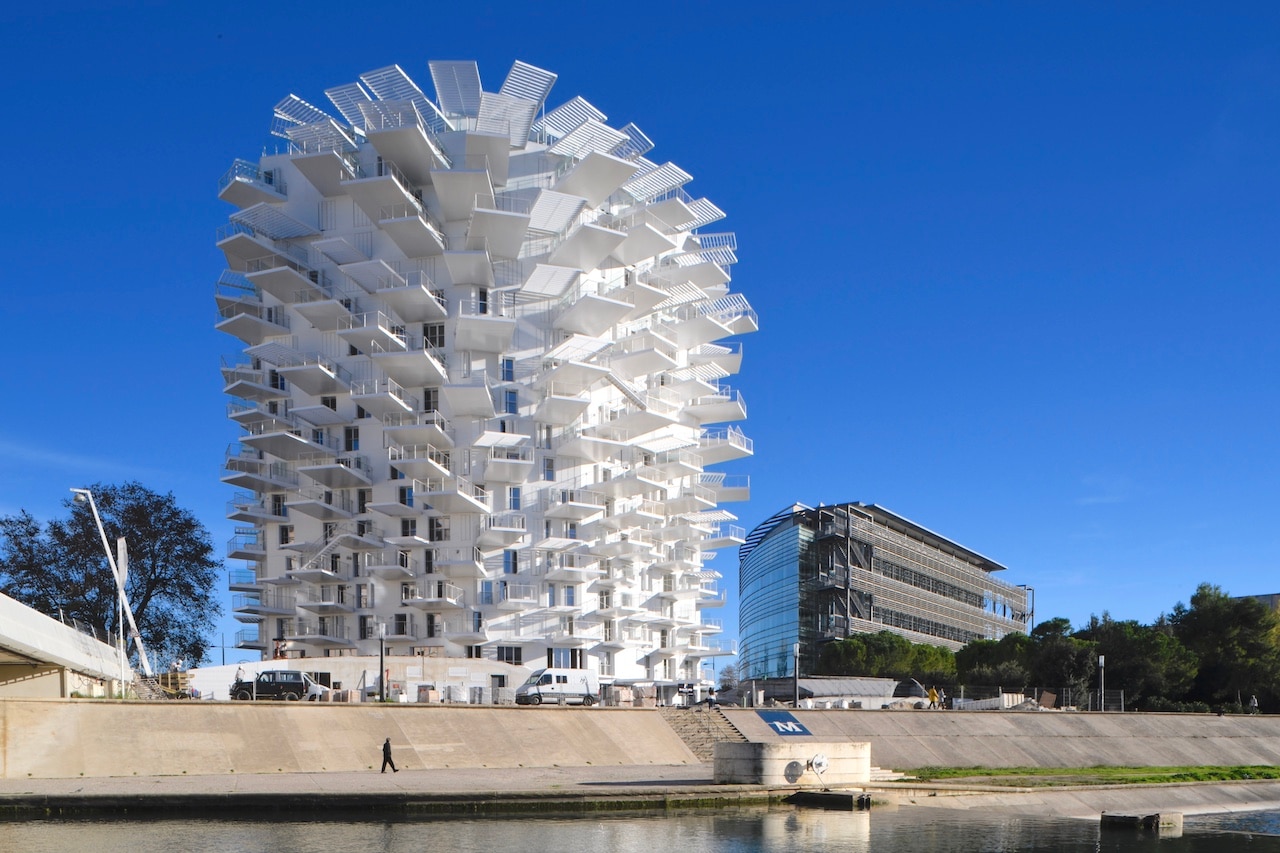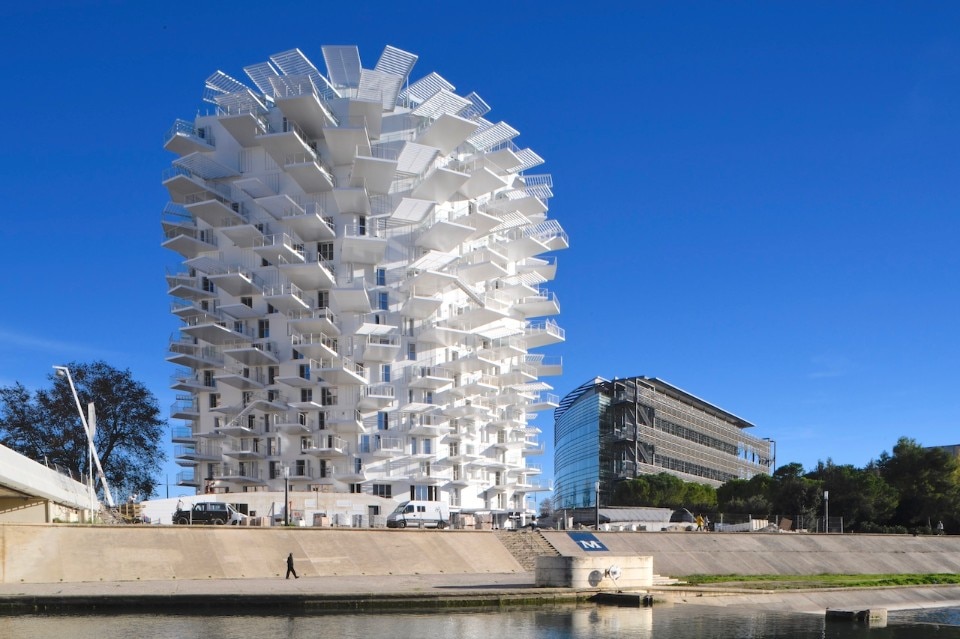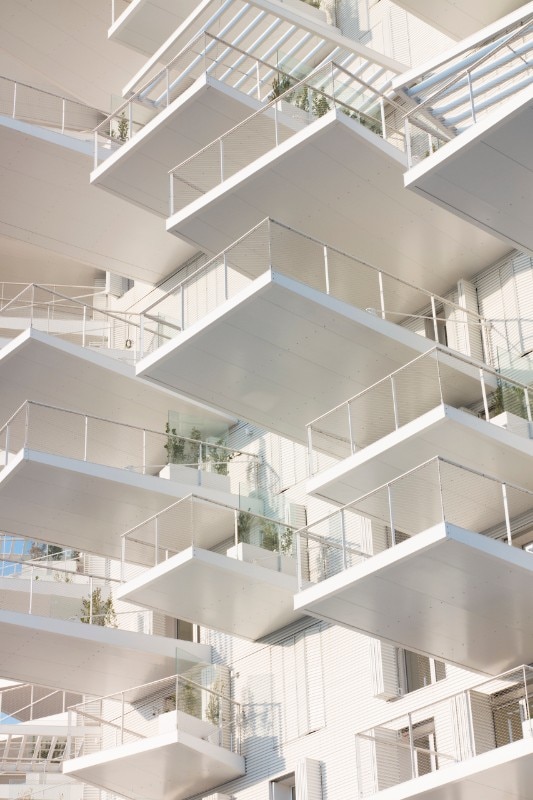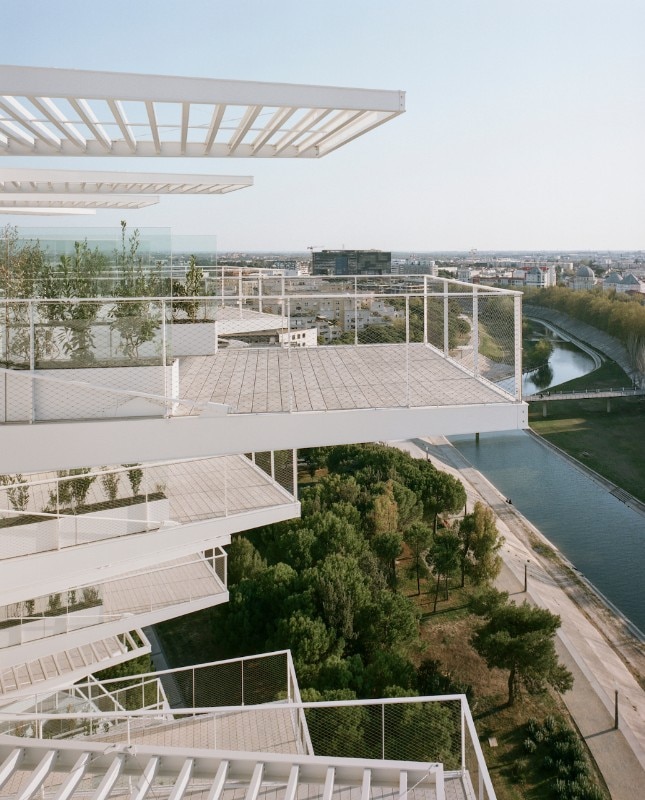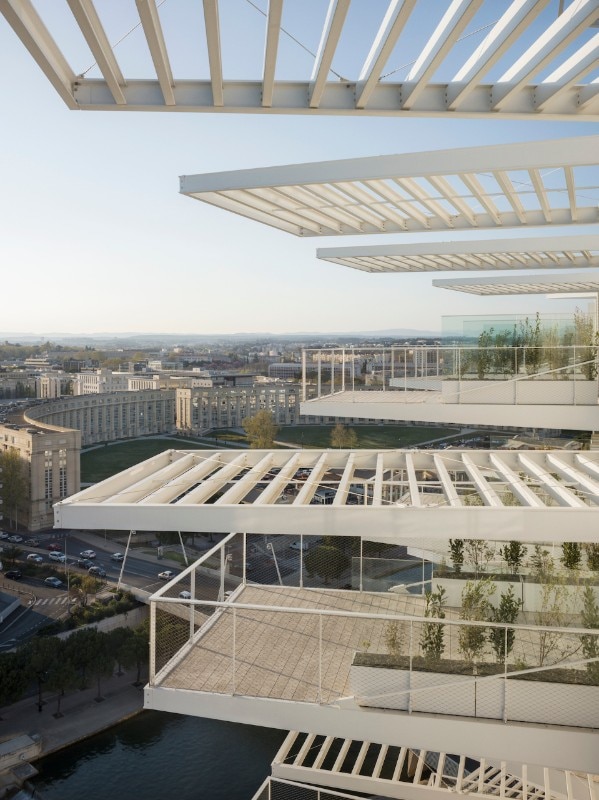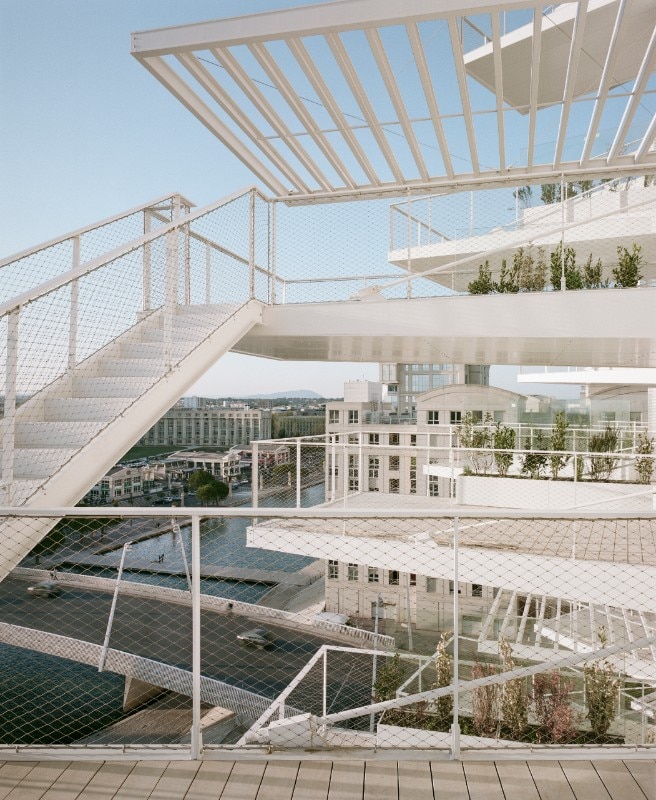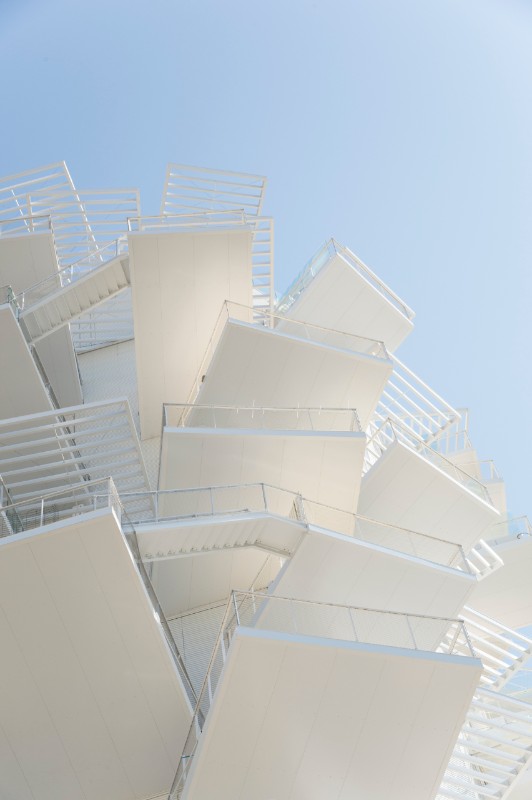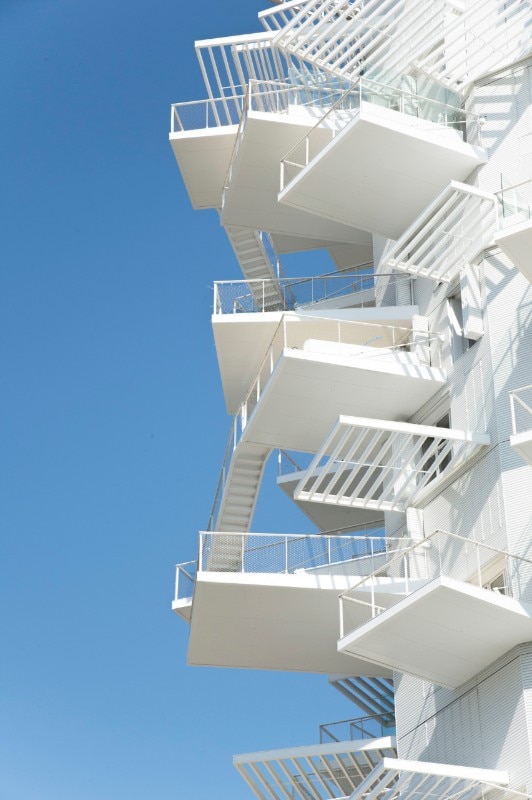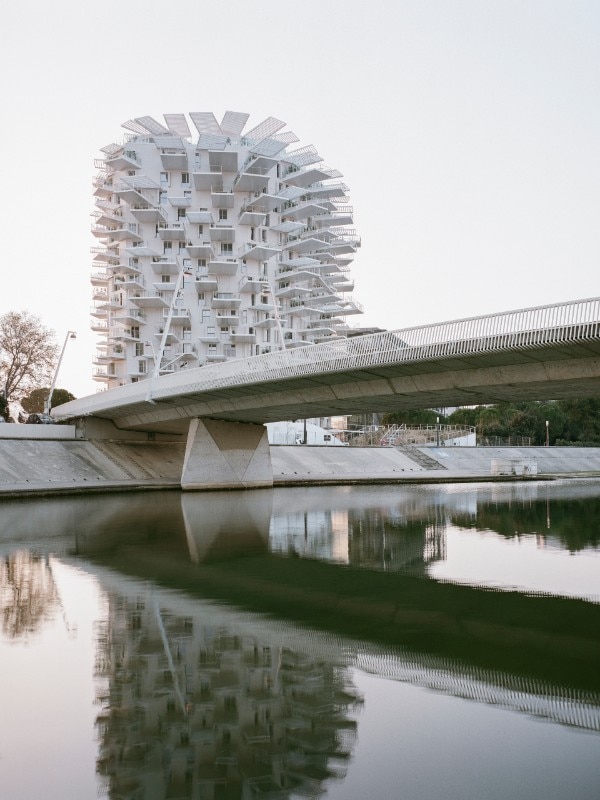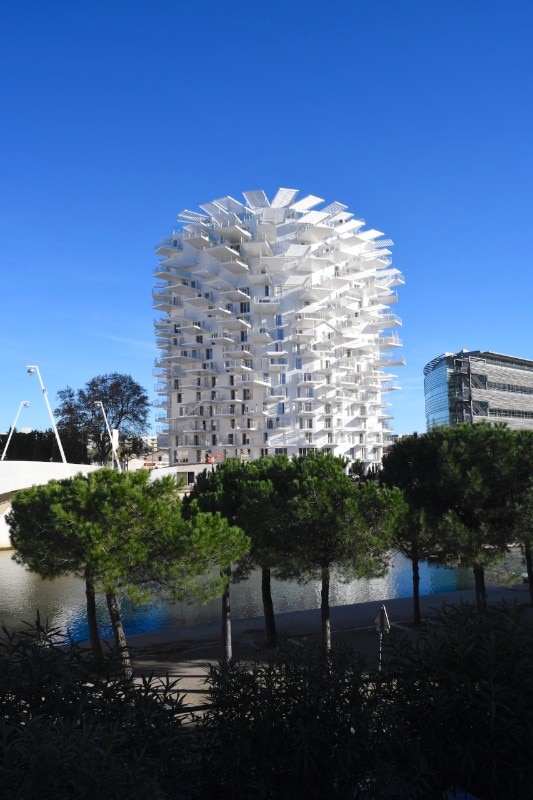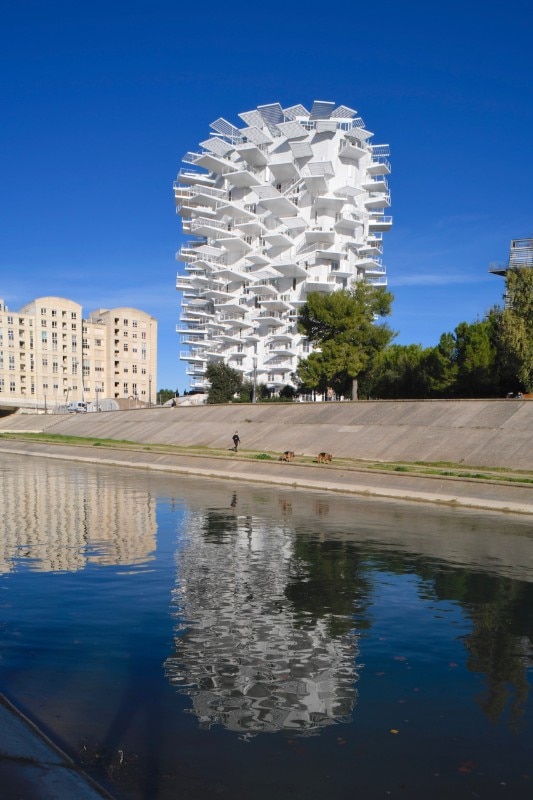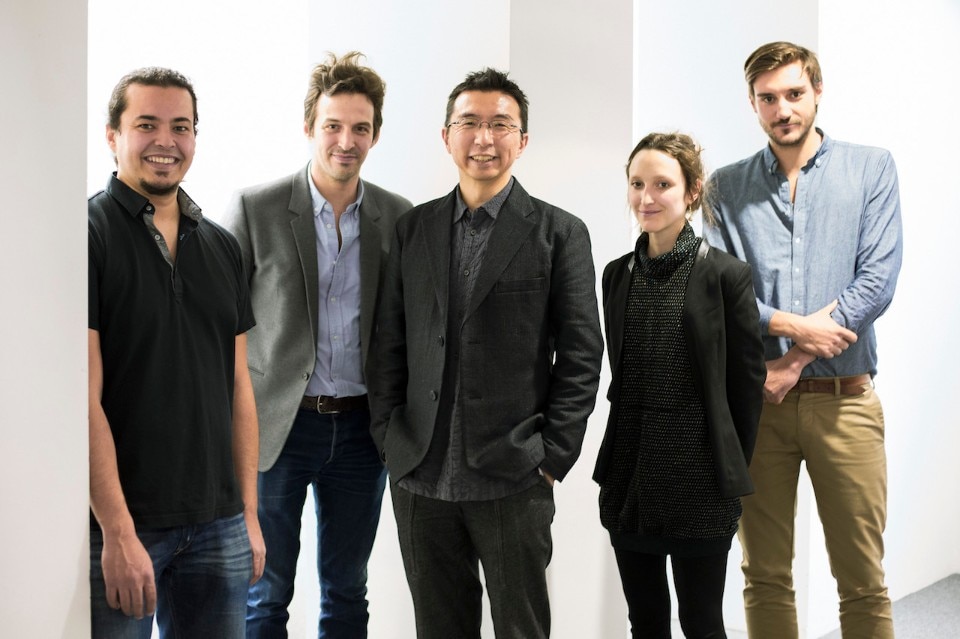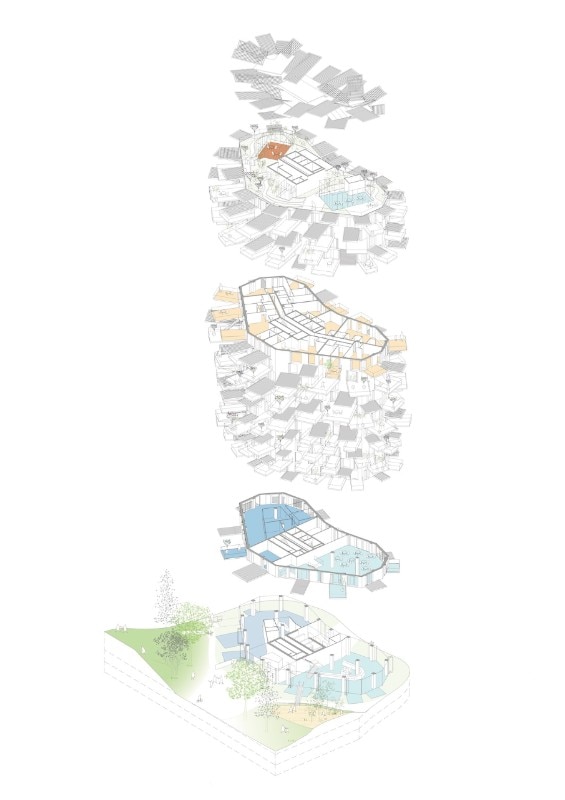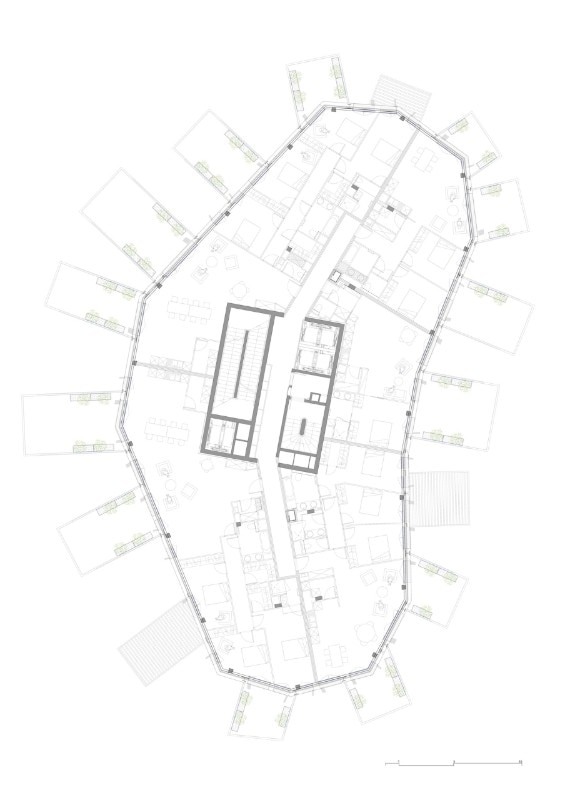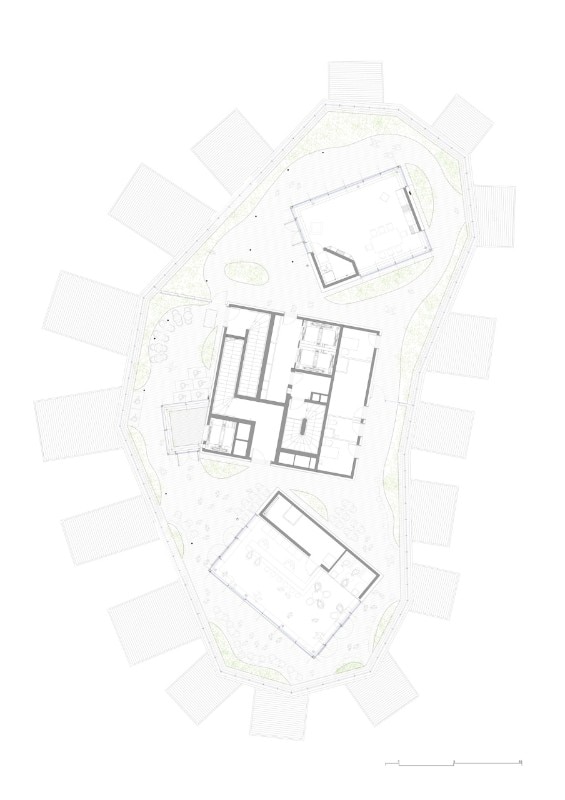This article was originally published on Domus 1037, July 2019
A 17-storey tower with a height of 55 metres and an area of 10,225 square metres, L’Arbre Blanc glitters with the white reflections of Mediterranean light combined with the refined purism of Japanese culture. Sou Fujimoto stresses how the project springs from an encounter between different cultures that share a desire to innovate, and to show that architecture still has a primordial value in both social and environmental innovation.
A unique work due to its bold expressive strength, L’Arbre Blanc makes morphological diversification feasible at reasonable prices. It turns singularity into a strength, while disposing of the idea that low-cost buildings must be standardised and reproducible.
The design reveals an intention to instil the project with a great sense of freedom, while of- fering a patch of sky to each of the inhabitants of the 113 apartments in this new folie of Montpellier. It represents the desire for a 21st-century Mediterranean skyscraper, a tower for all, open and accessible. In a strict sense, perhaps the true folies are the 193 balcony-terraces that make up the tower’s secondary structure, prompting us to reflect on a potential new ecology for tower buildings in hot climates.
Montpellier and its folies
A major player in its region’s urban development, the city of Montpellier has a long tradition ofstimulating architectural innovation. The original folies were country houses built in the 18th and 19th centuries on what were then the outskirts of Montpellier.
These were places of entertainment for the aristocracy and bourgeoisie, contrasting with the austerity of the urban buildings. Spectacular buildings with no functional purpose, they blended into the landscape and conveyed a sense of pleasure. An eccentric expression of architecture, freed from the stringent scope of utility, the folies helped define Montpellier’s urban identity.
In the wake of the tradition of folies, in 2013 the city of Montpellier launched a competition titled “L’Architecture du XXIème siècle – Les Folies architecturales”. The idea was to hold a competition that would produce innovative architecture for the construction of new urban folies (with homes, offices and shops). The brief stated that each team should comprise an established architect, a young architect and a building contractor.
Fujimoto, Laisné, Roussel, Rachdi
The competition team was largerly formed in an informal manner. Nicolas Laisné, Dimitri Roussel and Manal Rachdi met in Paris to discuss the make-up of the design team with which they would enter the competition. After lengthy reflection they wrote an email to Sou Fujimoto’s studio in Tokyo inviting him to join forces. Fujimoto replied that he was open to the idea and suggested having a chat via Skype to talk over the content, procedure and aims.
Having established a working method, the three architects departed for the Japanese capital to spend a week designing and swapping ideas with Sou Fujimoto. By 2013 Fujimoto had already achieved international fame thanks to projects including the Serpentine Gallery. At that time, the young architect Marie de France was working in Fujimoto’s office. Over the years, she would prove decisive in facilitating relations between the various teams and especially in establishing Fujimoto’s Paris office.
During the group’s design workshop, several models and thematic proposals were put forward, but the real turning point came with the questions that Sou Fujimoto presented to Laisné, Roussel and Rachdi regarding the lifestyle of Montpellier’s inhabitants. The ensuing considerations gave rise to the project, with the aim of offering future residents a place of natural life which is already inscribed in the character of this sunny Mediterranean city.
A 21st-century Mediterranean skyscraper
For L’Arbre Blanc – located in this city which boasts the highest number of sunny days in France – the architects have coined a slogan: Le dernier étage à tous les étages (meaning “the top floor on all floors”). The terrace balconies are designed as in-between spaces where the inhabitants can live both indoors and out. Their layout and the brise-soleils ensure a degree of privacy for each balcony. With a central core built according to a low-cost, standardised technique (with the central service block set in a reinforced concrete structure), L’Arbre Blanc presents its major innovation on the facade. All around it branches into 193 balconies of different shapes, but this facade is much more than a constructional element with generous forms.
It works as a spatial device capable of redefining what a Mediterranean skyscraper for the 21st century should be. This is no longer an enclosed, glass-covered building made inhabitable by air conditioning, but a piece of architecture with an atypical and unique morphology. It reduces the need for forced cooling and air conditioning by 30 per cent, because the shade cast by the balconies and the brise-soleils helps shelter the building from the sun and improves its energy performance.
Their apparently random positioning also optimises the effects of the wind typically pro- duced by high-rise buildings. In addition to its status as an urban icon, this project aspires to become a system of social activation. L’Arbre Blanc presents several programmatic innovations. In addition to homes, the building contains a restaurant and an art gallery on the ground and first floors and a cafe and play areas for residents on the rooftop. This is the first building of its type in Montpellier, a hybrid architecture that the city’s inhabitants can feel is theirs rather than an inaccessible object-place.
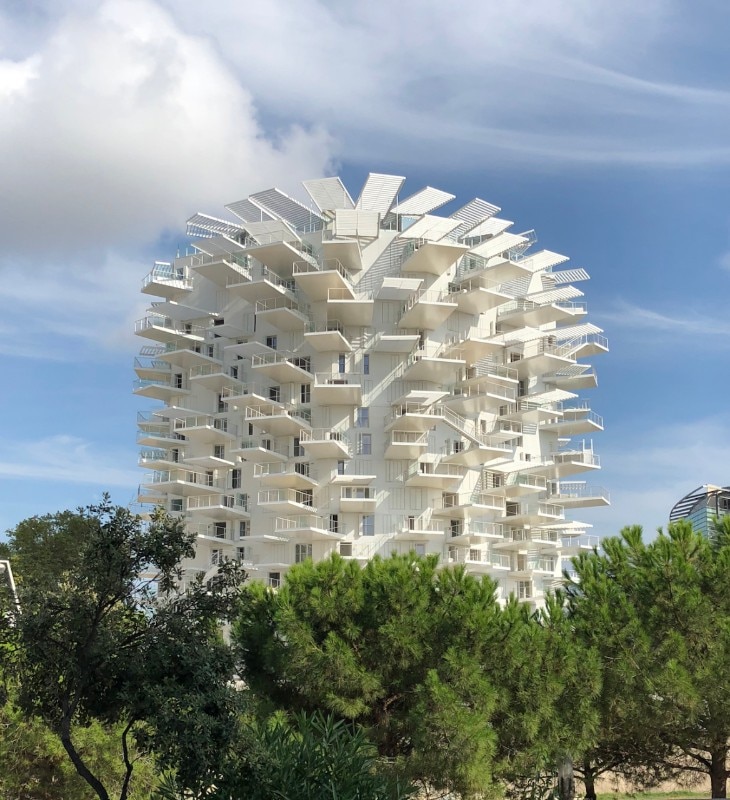
Technological innovation
The cantilevered terraces measure between 7 and 35 square metres. They are anchored to the structure by a set of steel bars resembling the structure of drawbridges. These are veritable living spaces where the occupants can arrange a sofa, a table, chairs or loungers and enjoy the sky. The future residents – the apartments sold out immediately – will certainly appreciate the terraces as a way of enhancing and enjoying the outdoor spaces, and the contractors were also more than happy to build them.
This is because the cost of a balcony-terrace remains sustainable in the overall economy of the project, as well as adding great quality to the architecture. To ensure the utmost transparency, the terrace parapets form an openwork of white-painted metal mesh. Then jardinières have been strate- gically placed to act as screens and guarantee greater privacy.
Seeking a 21st-century identity of its own, Montpellier makes architecture a credible research tool, capable of stirring its citizens’ pride and becoming a tourist attraction for visitors. The four architects were able to enjoy the pa- tronage of a client who had set their sights on bold, innovative and contemporary architecture. Effectively, this architecture can be considered an ecological and aesthetic breakthrough for new modern homes in hot climates.
Salvator-John A. Liotta is associate professor at the Faculty of Architecture La Cambre Horta, Université Libre de Bruxelles, and associate of the Laps Architecture studio in Paris.
Opening picture: View of the building from the opposite bank of the River Lez. Photo © Cyrille Weiner
- Project:
- L’Arbre Blanc
- Architects:
- Sou Fujimoto Architects, Nicolas Laisné, Dimitri Roussel, OXO Architectes
- Where:
- Montepellier, France


